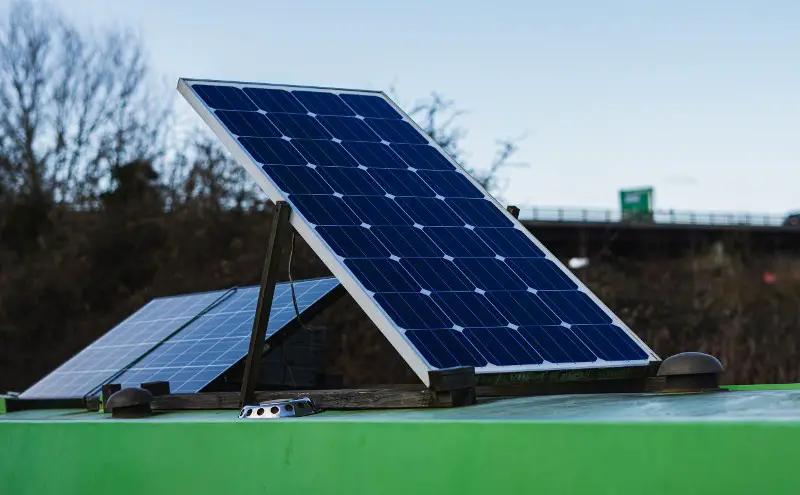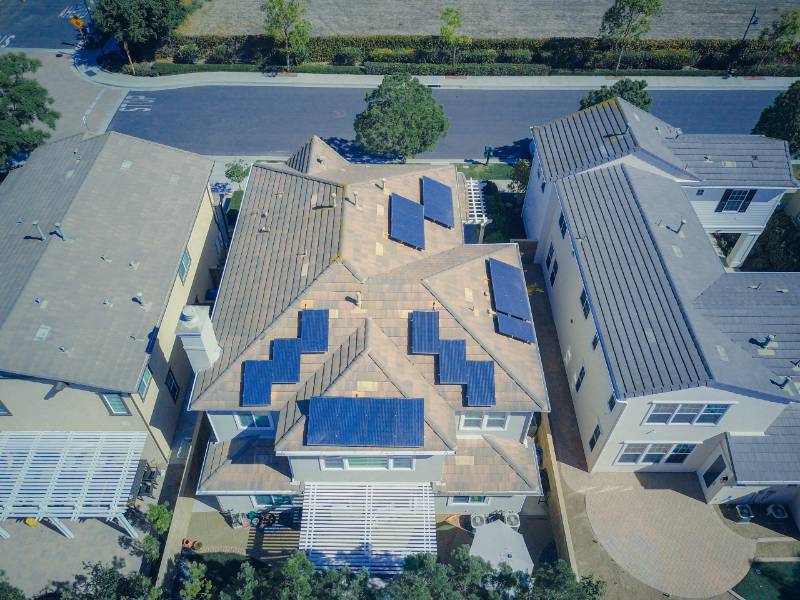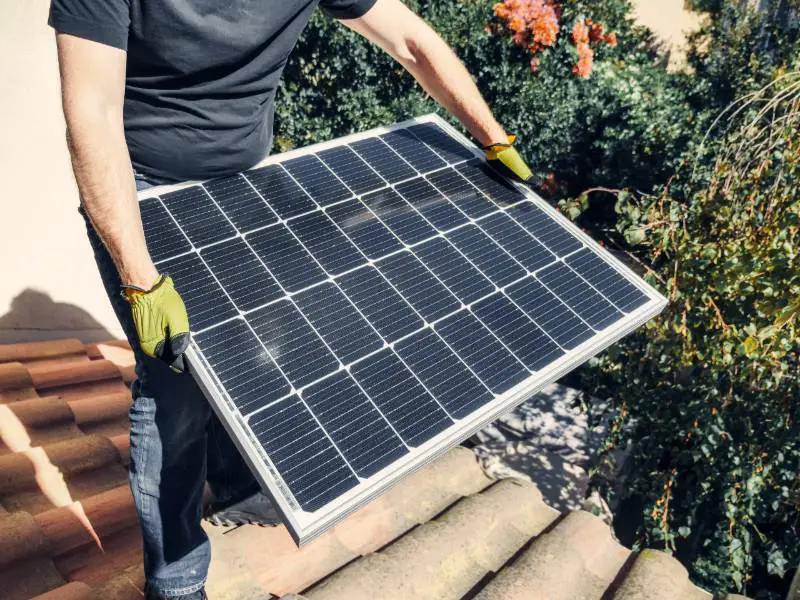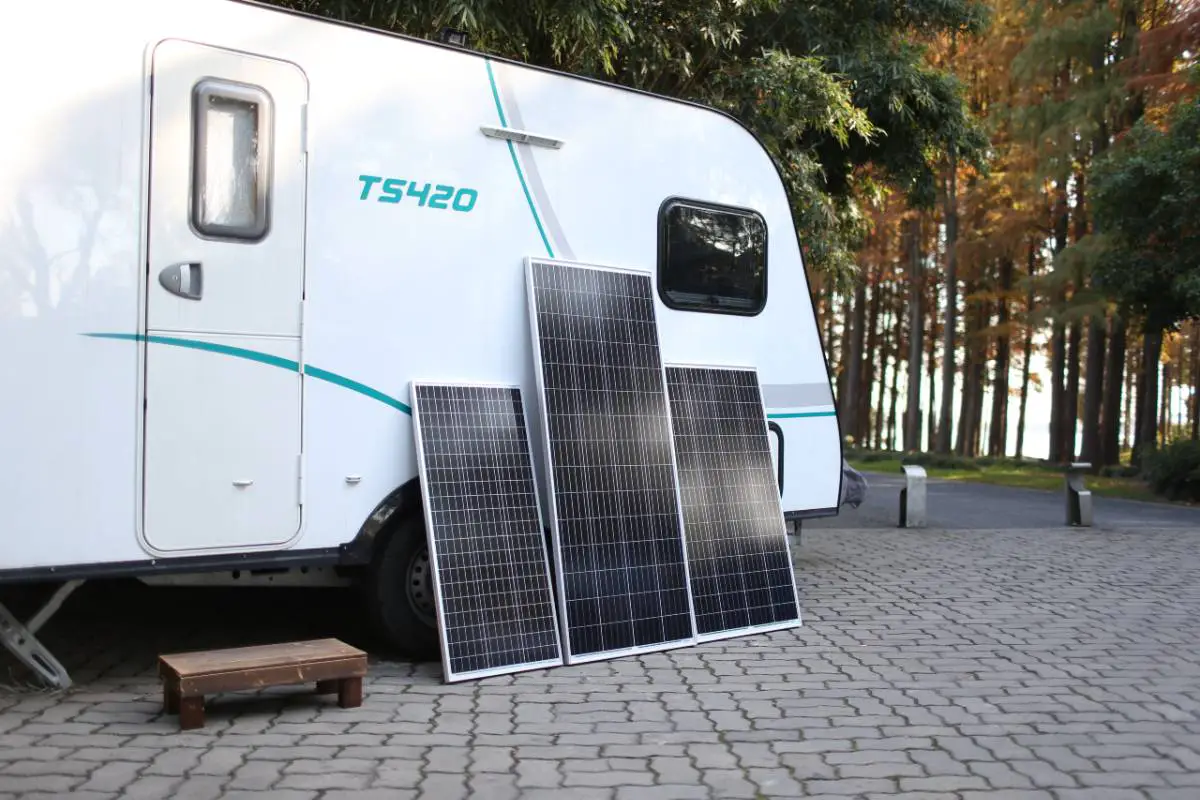Not all solar panels are the same.
Some give you just a peek at what it’s like to go off the grid, while others pack enough punch to handle your everyday power needs.
So, what can a 300W solar panel run?
This size panel is just right for a bunch of smaller gadgets or even one bigger appliance.
It’s perfect if you’re thinking about sprucing up your garden shed with some power, or keeping things running smoothly on your next camping trip.
In this article, I’ll guide you through everything a 300W solar panel can handle, how to make sure you’re using it effectively, and what you need to set it up so it works without a hitch.
Key Takeaways
- A 300W solar panel can run several smaller appliances like LED lights, laptops, and fans efficiently.
- It is designed to produce up to 300 watts of power under optimal conditions that simulate intense sunlight exposure.
- The actual daily output varies based on location and environmental factors, typically generating about 1.37 kWh after accounting for inefficiencies.
- A 300W solar panel costs between $170 and $350, depending on the brand and technology.
- The overall expense for a complete system setup, including the charge controller, battery storage, and inverter, can range from $850 to $900.
What Is a 300W Solar Panel?
A 300W solar panel is a type of photovoltaic (PV) module designed to churn out up to 300 watts of power, but that’s under ideal conditions—think a perfectly sunny day.
Here’s how it works: solar panels are rated in watts, which tells you how much power they can pump out under ideal testing conditions.
These Standard Test Conditions (STC) mimic the peak of sunlight during the day at a powerful 1,000W/m², keep the cell temperature at 25°C, and have a solar spectrum that matches the “air mass 1.5”.
So, how do manufacturers figure out if a panel meets its specs?
They put these panels through a sort of solar boot camp, blasting them with artificial sunlight and measuring how much electricity they spit out after an hour.
This test makes sure the wattage rating on the box is what you’ll get on those ideal sunny days.
But here’s the thing: not every day is perfect.
The amount of sunlight a panel receives—solar irradiance, if you want to get technical—can swing wildly depending on where you are, the time of year, and even the time of day.
That’s why understanding the difference between peak sunlight (like what’s used in testing) and the usual sunlight your panel sees is crucial.
When a panel passes the test and kicks out 300 watt-hours of electricity (that’s 0.3 kWh) during this simulated peak sunlight, it’s rated at 300 watts.
This rating is super handy—it gives you a ballpark figure of how much power the panel will produce in optimal sunlight each hour.
How Much Power Does a 300W Solar Panel Produce?
To calculate how much power a 300W solar panel can give you, first, you need to grab a key piece of info: how many hours of peak sunlight your spot gets each day.
If you’re not sure, no worries, there’s this online calculator for that.
Just pop in your zip code or city, and it’ll tell you the average peak sun hours.
For example, let’s say you’re in California like me, where the average is about 5.31 peak sun hours per day.
Here’s how you’d work out your solar panel’s daily output:
Solar Panel Power Output (Wh) = Solar Panel’s Rated Wattage (W) x Number of Peak Sun Hours (h)
For a 300-watt panel, that math would look like this:
Solar Panel Power Output (Wh) = 300 watts x 5.31 hours = 1593 Wh, or 1.593 kWh per day
But hold on—this number is what you’d expect in a perfect world.
Real life isn’t perfect, though.
Your panel’s actual output can get knocked down by things like shadows, dust, and equipment inefficiencies.
Usually, these can cut your total power output by up to 14%.
To get a real-world estimate, you should adjust that ideal number down by 14%.
So, you apply 86% to the perfect scenario output:
Adjusted Solar Panel Power Output (Wh) = (Solar Panel’s Rated Wattage (W) x Number of Peak Sun Hours (h) x 0.86)
Plugging back the numbers, you’ll find:
1.593 kWh x 0.86 = about 1.37 kWh per day.
That’s a more down-to-earth figure of what your 300-watt solar panel can generate each day, considering all the real-world hitches.
What Will a 300W Solar Panel Run?
Now that we know how much power our 300W solar panel produces, figuring out what it can run is pretty simple.
First, let’s look at powering a simple appliance.
Suppose you want to run a 35W fan for 8 hours a day.
We use this formula to calculate the energy it needs:
Appliance Required Power (Wh) = Appliance Power Rating (W) x Number of Hours Used (h)
Appliance Required Power (Wh) = 35W x 8h = 280Wh
Since our 300W solar panel will produce 1,37 kWh per day, it should be more than enough to power your fan for 8 hours.
In fact, with the energy produced, you could run the fan for about 38 hours straight without draining your supply.
But what if we have bigger fish to fry, like powering an RV?
The average RV uses about 5-20kWh per day, way more than our panel’s daily output of approximately 1.37 kWh.
In this case, a single 300W panel won’t cut it; you’d need around 900 watts of solar power to meet an RV’s demands.
Now, let’s take a look at my solar shed setup.
It’s got a variety of appliances, and I want to make sure the 300W panel can handle them all.
Here’s a breakdown of what’s in the shed:
- Small fridge on a 30% duty cycle for 8 hours a day
- 70W laptop for 4 hours
- 35W ceiling fan for 5 hours
- 20W LED light for 6 hours
- 5W phone charger for 4 hours
- 10W wifi router for 8 hours
Let’s put it all into a table to see the total power usage:
| Appliance | Wattage | Hours of Usage | Daily Energy Consumption (Wh) |
| Small Fridge | 75W | 8 hours (30% duty cycle) | 180Wh (75W x 8h x 0.30) |
| Laptop | 70W | 4 hours | 280Wh (70W x 4h) |
| Ceiling Fan | 35W | 5 hours | 175Wh (35W x 5h) |
| LED Light | 20W | 6 hours | 120Wh (20W x 6h) |
| Phone Charger | 5W | 4 hours | 20Wh (5W x 4h) |
| Wifi Router | 10W | 8 hours | 80Wh (10W x 8h) |
| Total | 855Wh |
With the total coming to 855Wh per day, and our panel producing about 1.37 kWh daily, it looks like we’re in good shape.
This example shows you just how to match up what you need with what you can produce.
Simply tally up your appliances’ energy use and compare it to your panel’s output to make sure everything runs smoothly.
How Many Batteries Do I Need for a 300W Solar Panel?
So, we’ve been talking about whether a 300W solar panel can power certain appliances, right?
But here’s the thing: solar panels don’t churn out power consistently all day, which isn’t great for your appliances that need a steady power supply.
That’s why it’s super handy to have a battery bank in any small solar setup.
It stores all that energy your panel collects during the day so you have a steady stream of power whenever you need it.
Calculating the battery size for a 300W solar panel is pretty easy.
You just divide the amount of energy your solar panel produces per day by the battery’s voltage and the depth of discharge (DoD).
Battery Size (Ah) = Solar Panel Daily Output (Wh) / Battery’s Voltage (12/24V) / DoD (0.5/0.75/0.8)
Since we know that a 300W solar panel will produce about 1.37 kWh per day.
First thing, you’ll need to convert that to watt-hours, because our battery capacity is measured in watt-hours.
So, multiply by 1,000:
1.37 kWh x 1,000 = 1370 Wh
Next, let’s plug those numbers into our formula.
If you’re using a 12V battery and planning to use up to 80% of its capacity (that’s a pretty common DoD to keep your battery healthy for longer), here’s how the math looks:
Battery Size (Ah) = 1370 Wh / 12V / 0.8 = 142.7 Ah ~ 143 Ah
So, you’d want to get a battery with about 143 Ah capacity to pair with your 300W panel.
What Size Charge Controller for a 300W Solar Panel?
Connecting your solar panels directly to your batteries is a risky move—it can lead to overcharging, which might damage your batteries.
To prevent this, you need a charge controller in the mix.
This device manages the power flowing from your solar panel to your battery, making sure it charges safely and doesn’t go overboard.
To calculate the required charge controller size for a 300W solar panel, you can use this calculator.
For my example, I selected the following options:
- Solar Panel Wattage: 300W
- Solar Panel Voltage: 24V
- Battery Bank Voltage: 12V
The result is that I need a 31.3A charge controller for my 300W solar panel.
And one more tip: go for an MPPT (Maximum Power Point Tracking) charge controller.
They’re a bit more high-tech than the standard PWM (Pulse Width Modulation) types, squeezing out more efficiency from your setup.
This means better performance and quicker battery charging, making them well worth the investment.
What Size Inverter for a 300W Solar Panel?
Solar panels are great at generating direct current (DC) electricity, but here’s the catch: most of our home appliances, like TVs and laptops, run on alternating current (AC).
So if you want to use that solar power effectively, you’re going to need an inverter to change DC into AC.
When it comes to figuring out what size inverter you need, it depends on how much power you’re planning to use.
For a system that’s tied to the main power grid—a grid-tied system—you’d usually bump up your panel’s wattage by about 15% to find the right inverter size.
So, for a 300W solar panel, you’d be looking at an inverter around 345W (that’s 300W multiplied by 1.15).
However, since we’re dealing with a small off-grid system here—just powering a few appliances—our approach to finding the right inverter size is more specific.
Instead, you just tally up the total wattage of everything you want to run at the same time.
Here’s a quick breakdown:
- Small fridge: 75W
- Laptop: 70W
- Ceiling fan: 35W
- LED light: 20W
- Phone charger: 5W
- Wifi router: 10W
Add these up:
Solar Inverter Size (W) = 75W + 70W + 35W + 20W + 5W + 10W = 215W
So, that’s the minimum capacity your inverter needs to handle all these items simultaneously.
To make sure you’ve got a little extra room and to keep things running smoothly, opting for a 250W pure sine wave inverter is a smart choice.
How Much Does a 300W Solar Panel Cost?
A 300W solar panel can set you back anywhere from $170 to $350.
That price tag depends on what kind of panel it is, how big it is, and how efficient it is at turning sunlight into electricity.
Just remember, that’s just the start—there’s more gear you need to use that panel.
You’ll need to pick up a charge controller, a battery, and an inverter to get everything up and running.
When it comes to the full package, a typical 300W solar kit, which includes the panel and all the fixings except for the battery, usually costs around $550.
If you want to include a battery in the mix, you’re looking at a total cost of about $850 to $900 for everything.
So, while the initial cost might be steep, keep in mind that you’re buying the whole setup to capture and use free sunlight, which can save you money in the long run.
FAQs
What Can I Run Off a 300W Solar Panel?
A 300W solar panel can power small appliances like LED lights, fans, and laptops, or one larger appliance, such as a small fridge.
How Much Power Can a 300W Solar Panel Produce?
A 300W solar panel can produce between 1.3 kWh and 2.5 kWh per day, depending on sunlight availability and panel efficiency.
Can a 300W Solar Panel Run a Refrigerator?
A 300W solar panel can run a small refrigerator with a 30% duty cycle, especially if it’s energy-efficient, though a battery system for storage is recommended.
How Many 300W Solar Panels to Run a House?
About 23 to 25 300W solar panels run an average house efficiently, depending on total daily energy consumption and local sun exposure.
Last Words
Just like that, we’ve covered all the basics you need to know about 300-watt solar panels.
We explored what “300W” really means, how much juice you can expect it to pump out, and which of your gadgets and appliances can run off it.
We also figured out the best size for a charge controller, battery, and inverter to make sure everything runs smoothly.
And here’s a tip just for you: Before you buy, think about where you’ll place your solar panel.
Getting the most sunlight possible is key, so a spot without shade and with direct exposure to the sun during peak hours will make a huge difference in performance.






